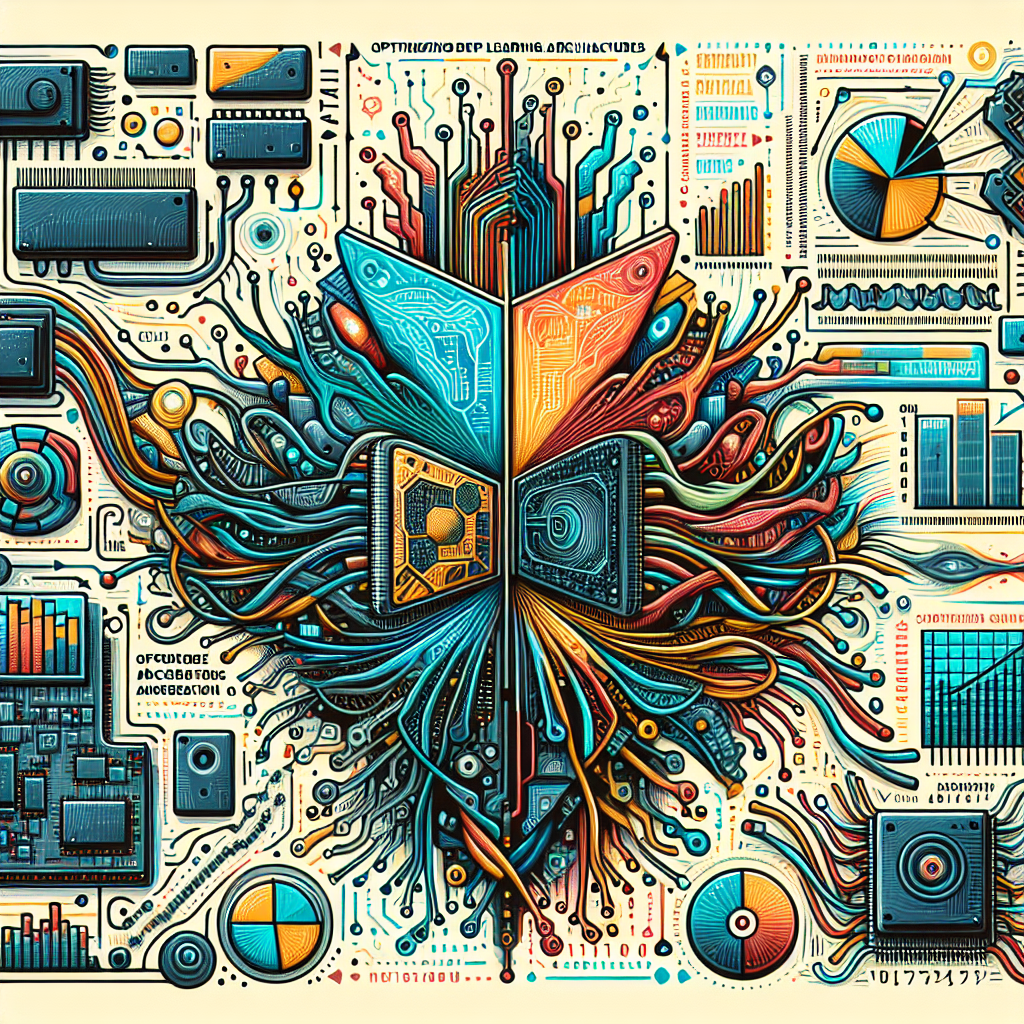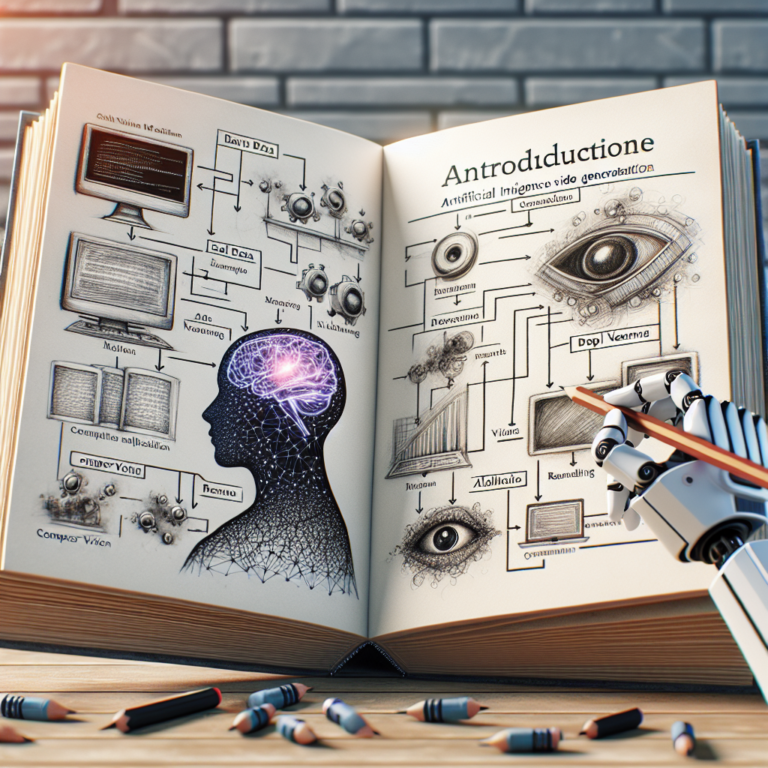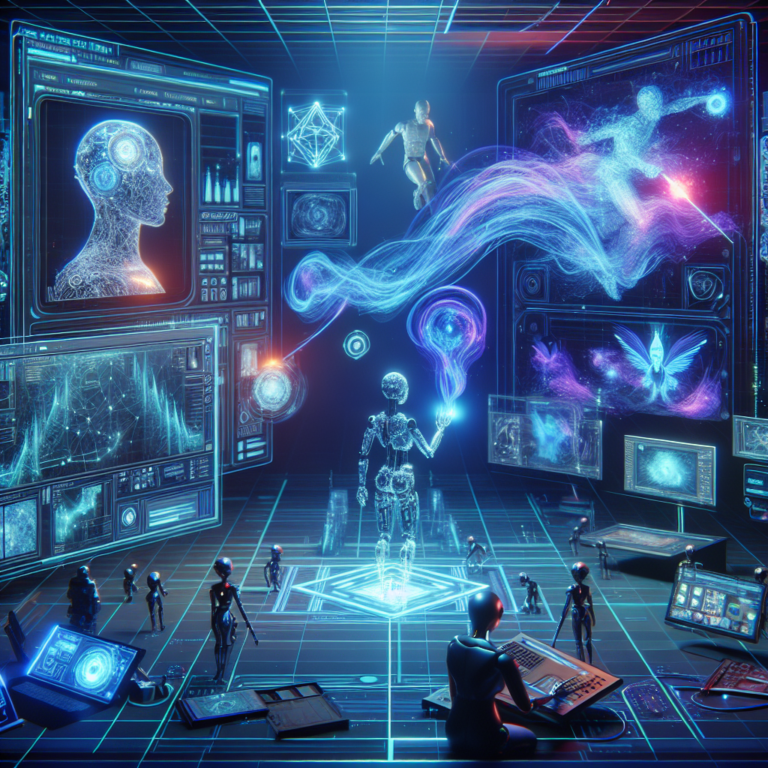Optimising deep learning architectures for Video Analytics and Generation on resource-constrained devices
Techniques For Reducing Model Complexity In Video Analytics On Resource-Constrained Devices
In the rapidly evolving field of video analytics and generation, the deployment of deep learning models on resource-constrained devices presents a unique set of challenges. These devices, often characterized by limited computational power, memory, and energy resources, necessitate innovative techniques to optimize model complexity without compromising performance. As the demand for real-time video processing grows, particularly in applications such as surveillance, autonomous vehicles, and mobile devices, the need for efficient deep learning architectures becomes increasingly critical.
One of the primary techniques for reducing model complexity is model pruning. This process involves removing redundant or less significant parameters from a neural network, thereby reducing its size and computational requirements. By carefully identifying and eliminating these parameters, it is possible to maintain, or even enhance, the model’s performance while significantly decreasing its resource consumption. Pruning can be applied at various levels, including weights, neurons, or entire layers, and can be executed either during training or as a post-training optimization step.
Complementing pruning, quantization is another effective strategy for optimizing deep learning models. Quantization reduces the precision of the model’s parameters, typically from 32-bit floating-point representations to lower-bit formats such as 16-bit or even 8-bit integers. This reduction in precision leads to smaller model sizes and faster computation times, which are crucial for deployment on devices with limited resources. Despite the reduction in precision, carefully designed quantization techniques can preserve the model’s accuracy, ensuring that the trade-off between efficiency and performance is well-balanced.
In addition to pruning and quantization, knowledge distillation offers a promising approach to model optimization. This technique involves training a smaller, more efficient model, known as the student model, to replicate the behavior of a larger, more complex model, referred to as the teacher model. By transferring knowledge from the teacher to the student, it is possible to achieve a compact model that retains much of the original model’s accuracy. Knowledge distillation is particularly useful in scenarios where the deployment of large models is impractical due to resource constraints.
Furthermore, the design of lightweight neural network architectures specifically tailored for resource-constrained environments has gained significant attention. Architectures such as MobileNet, SqueezeNet, and ShuffleNet are examples of models that have been engineered to minimize computational demands while maintaining high levels of accuracy. These architectures often employ techniques such as depthwise separable convolutions and group convolutions to reduce the number of parameters and operations required, making them well-suited for deployment on devices with limited capabilities.
Finally, the integration of hardware-aware neural architecture search (NAS) can further enhance the optimization process. NAS automates the design of neural networks by searching for architectures that meet specific hardware constraints, such as latency or energy consumption. By considering the unique characteristics of the target device during the architecture search, NAS can produce models that are not only efficient but also tailored to the specific requirements of the deployment environment.
In conclusion, optimizing deep learning architectures for video analytics and generation on resource-constrained devices involves a multifaceted approach that combines pruning, quantization, knowledge distillation, lightweight architecture design, and hardware-aware NAS. By leveraging these techniques, it is possible to develop models that are both efficient and effective, enabling the deployment of advanced video analytics capabilities on a wide range of devices. As technology continues to advance, the ongoing refinement and integration of these optimization strategies will be essential in meeting the growing demands of real-time video processing applications.
Efficient Neural Network Architectures For Real-Time Video Generation

In recent years, the field of video analytics and generation has witnessed significant advancements, largely driven by the development of deep learning architectures. These architectures have enabled the creation of sophisticated models capable of understanding and generating video content with remarkable accuracy. However, the deployment of such models on resource-constrained devices, such as smartphones and edge devices, presents unique challenges. These devices often have limited computational power, memory, and energy resources, necessitating the development of efficient neural network architectures that can operate in real-time without compromising performance.
To address these challenges, researchers have focused on optimizing neural network architectures to reduce their computational complexity and memory footprint. One approach involves the use of model compression techniques, such as pruning and quantization. Pruning reduces the number of parameters in a network by removing redundant or less important connections, while quantization reduces the precision of the network’s weights and activations. These techniques can significantly decrease the size of the model and the amount of computation required, making it more suitable for deployment on resource-constrained devices.
Another promising strategy is the design of lightweight neural network architectures specifically tailored for video analytics and generation tasks. These architectures, such as MobileNet, ShuffleNet, and EfficientNet, are designed to be computationally efficient while maintaining high accuracy. They achieve this by employing techniques like depthwise separable convolutions, which reduce the number of parameters and operations compared to traditional convolutional layers. Additionally, these architectures often incorporate innovative design principles, such as neural architecture search, to automatically discover optimal network structures that balance efficiency and performance.
Furthermore, the use of temporal information in video data presents additional opportunities for optimization. Unlike static images, video frames are inherently sequential and often exhibit significant temporal redundancy. By leveraging this redundancy, models can be designed to process only the most informative frames or regions, thereby reducing the computational burden. Techniques such as temporal sampling, motion estimation, and recurrent neural networks can be employed to efficiently capture and utilize temporal dependencies in video data.
In addition to architectural optimizations, advancements in hardware accelerators have also played a crucial role in enabling real-time video analytics and generation on resource-constrained devices. Specialized hardware, such as graphics processing units (GPUs), tensor processing units (TPUs), and neural processing units (NPUs), are designed to accelerate the execution of deep learning models. These accelerators can significantly enhance the performance of neural networks, allowing them to process video data in real-time even on devices with limited resources.
Moreover, the integration of edge computing paradigms has further facilitated the deployment of deep learning models for video analytics and generation. By processing data closer to the source, edge computing reduces the latency and bandwidth requirements associated with transmitting video data to centralized servers. This approach not only improves the responsiveness of video applications but also enhances privacy and security by minimizing the need to transmit sensitive data over the network.
In conclusion, optimizing deep learning architectures for real-time video generation on resource-constrained devices is a multifaceted challenge that requires a combination of model compression techniques, lightweight architecture design, temporal information utilization, and hardware acceleration. As research in this area continues to advance, it holds the potential to unlock new possibilities for video analytics and generation applications, enabling them to operate efficiently and effectively on a wide range of devices.
Balancing Accuracy And Efficiency In Deep Learning Models For Video Processing
In recent years, the proliferation of video content has necessitated the development of sophisticated deep learning models capable of processing and generating video data efficiently. However, the deployment of these models on resource-constrained devices, such as smartphones and IoT devices, presents a unique set of challenges. Balancing accuracy and efficiency in deep learning models for video processing is crucial to ensure that these devices can perform complex tasks without compromising performance or draining resources.
To begin with, the inherent complexity of video data, which includes spatial and temporal dimensions, requires models that can effectively capture and process this information. Traditional deep learning architectures, such as convolutional neural networks (CNNs) and recurrent neural networks (RNNs), have been adapted to handle video data through techniques like 3D convolutions and long short-term memory (LSTM) units. However, these adaptations often result in increased computational demands, making them less suitable for resource-constrained environments. Consequently, researchers have been exploring various strategies to optimize these models for efficiency while maintaining high levels of accuracy.
One promising approach is model compression, which involves reducing the size and complexity of deep learning models without significantly affecting their performance. Techniques such as pruning, quantization, and knowledge distillation have been employed to achieve this goal. Pruning involves removing redundant or less important parameters from the model, thereby reducing its size and computational requirements. Quantization, on the other hand, reduces the precision of the model’s parameters, allowing for faster computations and lower memory usage. Knowledge distillation transfers the knowledge from a large, complex model to a smaller, more efficient one, enabling the latter to perform at a similar level of accuracy.
In addition to model compression, the design of lightweight architectures specifically tailored for video processing on resource-constrained devices has gained traction. MobileNet and EfficientNet are examples of such architectures that prioritize efficiency without sacrificing accuracy. These models utilize depthwise separable convolutions and compound scaling, respectively, to achieve a balance between performance and resource consumption. By leveraging these innovative design principles, it is possible to develop models that are both effective and efficient for video analytics and generation tasks.
Furthermore, the integration of hardware accelerators, such as GPUs and TPUs, into resource-constrained devices has facilitated the deployment of deep learning models for video processing. These accelerators are designed to handle the parallel processing demands of deep learning tasks, thereby enhancing the efficiency of model execution. However, the challenge lies in optimizing the models to fully exploit the capabilities of these accelerators while minimizing energy consumption. Techniques such as model parallelism and pipeline parallelism have been explored to distribute the computational load across multiple processing units, thereby improving efficiency.
In conclusion, optimizing deep learning architectures for video analytics and generation on resource-constrained devices requires a multifaceted approach that balances accuracy and efficiency. By employing model compression techniques, designing lightweight architectures, and leveraging hardware accelerators, it is possible to develop models that meet the demands of video processing tasks without overwhelming the limited resources of these devices. As the field of deep learning continues to evolve, ongoing research and innovation will be essential to address the challenges associated with deploying these models in resource-constrained environments, ultimately enabling a wider range of applications and enhancing the capabilities of modern devices.


